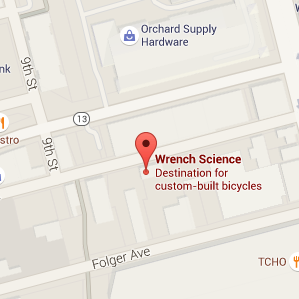Removing and installing bike pedals can frequently elicit grunts and swear words from even the most accomplished bicycle mechanics. If pedals haven’t been removed for a while, they can be pretty stubborn about not coming off easily. We have a few helpful hints about how to remove and install bike pedals that hopefully will make it an easy process.
If you are flying a lot with your bike, then you will likely know the routine of how to get bike pedals off since you’ll have to take your pedals off every time you pack it. However, even if you aren’t traveling frequently with your bike, you’ll want to make certain that you are servicing the pedal bearings when necessary.
There are a few tools you will absolutely need to work with the pedals. Most importantly, you’ll need the right tool to remove and install them effectively. Depending on the pedal type, that will either be a flat pedal wrench to position on the axle between the pedal body and the crank arm. Alternatively, certain pedals require an 8mm Allen wrench that will fit into the backside of the pedal thread.

Though it’s possible to remove bike pedals with the bike just standing on the floor, you might find having the bike secured in a bike stand will help give you better access as well as the leverage you’ll need to convince stubborn pedals too tightly connected to the crank.
How to remove bike pedals
Knowing your left from your right will be a big help since each pedal has a different rule for which direction loosens. Just remember that the left pedal is reverse threaded which means that you turn clockwise to loosen it. On the other hand, the right pedal has a regular threading and consequently needs to be turned counterclockwise to be loosened.
Once you have that straight, you then need to ascertain which tool your pedal type requires: Allen wrench or pedal wrench. The easiest way to check is simply look at the back side of the pedal thread as it appears from the inside of the crank. If you can see that an Allen wrench will fit in the space, then that’s what you need to use. Otherwise, a pedal wrench is the way to go.

In the case of an Allen wrench, you will do yourself a big favor if you use the longest Allen wrench you can find since the leverage the extra length will provide will be very valuable. Place the tool in the proper place at the back of the pedal thread. Have the wrench positioned at an effective angle that will allow you to have optimal leverage.
Grab the opposite crank arm to use as an opposing lever. Apply pressure to the wrench while holding the opposite crank arm. Hopefully it will give way without requiring too much force. Please remember to work clockwise on the left pedal and counterclockwise on the right pedal.
Once you have forced the pedal loose, you can rotate the crank (in the appropriate direction per pedal) to undo the rest of the threading from the crank arm.

How to install bike pedals
When you are preparing to install pedals, you will need the same tools required to remove pedals. In addition, it will be a very good idea to grease the pedal threading first. That will help the pedal threading to play nice with the crank threading and prevent things like difficult removal processes down the line which could in worse case scenarios end by stripping the threading in the crank arm.
Once you’ve greased the pedals, or perhaps while you are greasing them, determine which are the left and right pedals. For road clipless pedals, that’s usually pretty clear but in certain mountain bike pedals and flat pedals it’s not always quite as obvious. All pedals are typically marked on the axle with an L for left and R for right.
When you are sure which pedal goes on which side, then take one of the pedals and start to thread it into the crank arm by hand. This can be a fiddly process to get the threads to interact, but don’t lose faith. It’s important not to cross-thread the pedal and crank threads. You know the sensation if you’ve ever struggled to tighten the lid of a jam jar. But in the case of threading a pedal, it could risk damaging the thread of the crank or the pedal or both.

Once you have successfully threaded the pedal until it becomes difficult for you to thread any more by hand, take whichever wrench type your pedal requires and continue to tighten the pedal securely.
The general recommendation for how much force is needed to tighten a bike pedal is somewhere in the 30 to 40 Newton meters region. If you don’t know how tight that means, it’s a good general rule to tighten with the wrench until you feel the first firm moment of resistance. Then stop. Any tighter and you might be making removal down the line much, much harder. Or worse.
There’s a typically fun German expression that says “Nach ganz fest kommt ganz lose.” In other words, tighten it too much and you’ll strip the whole darn thing off. So be careful not to over-muscle it.
Removing a bike pedal can require a fine mixture of force and finesse. You can save yourself a lot of future trouble if you take proper steps when installing the bike pedals. Learning the proper way of how to remove and replace bike pedals will make all future flying travel plans easier and encourage you to do maintenance on your pedals more regularly.
I hope you find the article interesting and helpful! You might also want to read one of our previous articles, where we advise on How to Clean a Bike Chain.



































































































































































































































































